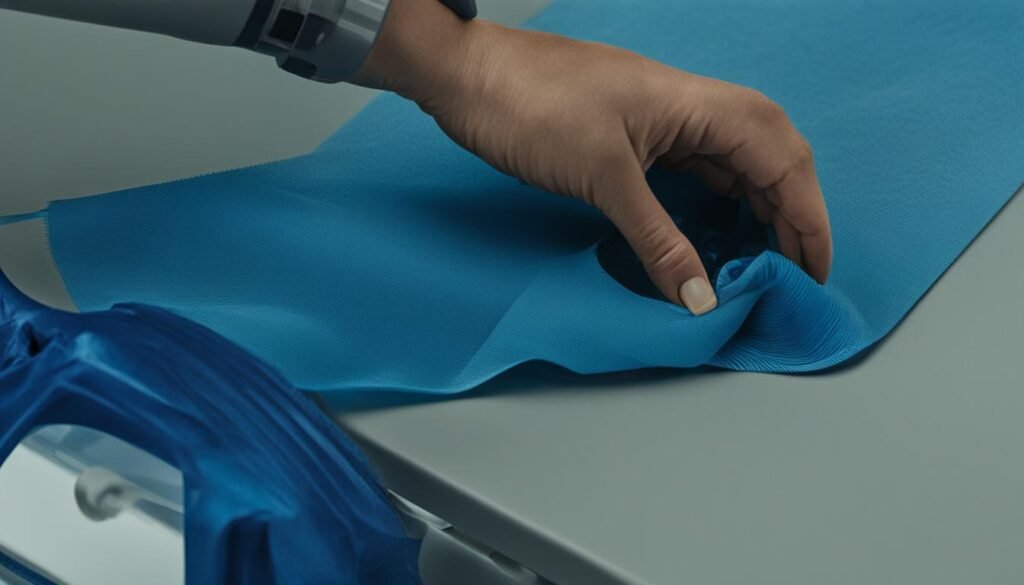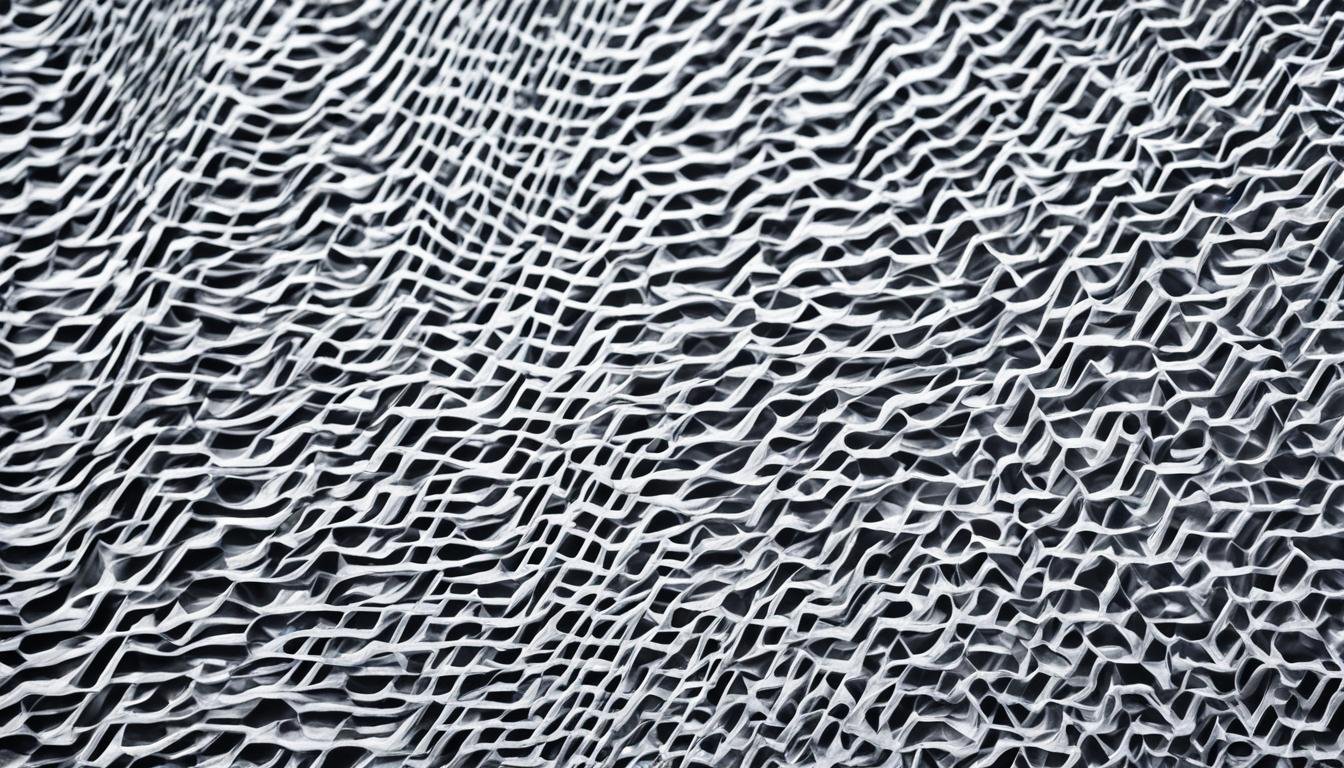As concerns about respiratory health continue to grow, people are searching for effective ways to protect themselves and their loved ones. Masks have become essential in our daily lives, but with the increasing demand, supplies are running short. In this article, I will explore the use of vacuum cleaner bags as an alternative filtration material for DIY masks, discussing their effectiveness in providing respiratory protection.
Key Takeaways:
- Vacuum cleaner bags made from melt-blown fabric can capture 86% of particles as small as 0.02 microns.
- Making masks with vacuum cleaner bags is a cost-effective option when medical masks are in high demand.
- Homemade masks with vacuum cleaner bag filters are not a substitute for N95 masks.
- Using vacuum cleaner bags as mask filters can significantly improve filtration efficiency.
- DIY masks should be used in conjunction with other preventive measures like social distancing and hand hygiene.
Why Choose Homemade Masks with Vacuum Cleaner Bags over Store-Bought Masks?
There are several reasons why making homemade masks with vacuum cleaner bags is a better option compared to buying store-bought masks.
Firstly, there is a high demand for medical masks, putting healthcare providers at risk of a shortage. By opting for homemade masks, the general public can help ensure that the limited supply of medical masks is available to those who need it the most.
Secondly, the purchase of household maintenance masks has also increased significantly, making it difficult for shoppers to find them. Homemade masks provide an alternative solution when other options are scarce. By repurposing vacuum cleaner bags as filtration material, you can create an effective mask that helps protect your respiratory health.
Finally, the cost of face masks has surged due to the global health crisis, making them an expensive necessity. Homemade masks, on the other hand, offer a more affordable option for individuals. By making your own mask with a vacuum cleaner bag, you can save both time and money while still prioritizing your respiratory protection.
We want to ensure that our healthcare workers have access to the masks they need. By using vacuum cleaner bags, we can help alleviate the supply shortage and protect ourselves at the same time.
So, when faced with the choice between store-bought masks and homemade masks with vacuum cleaner bags, the latter provides a practical and cost-effective solution. Not only does it address the supply shortage, but it also allows individuals to take control of their respiratory health and protect themselves and others from airborne particles.
Effectiveness of Vacuum Cleaner Bags as Mask Filters
Vacuum cleaner bags made from melt-blown fabric have proven to be highly effective as filters for homemade masks. Research conducted by Cambridge University reveals that these vacuum bags can capture up to 86% of particles as small as 0.02 microns, a size larger than that of the coronavirus. This suggests that utilizing vacuum cleaner bags as filter material significantly enhances the filtration efficiency of homemade masks, providing a substantial level of protection against airborne particles.
However, it is important to note that homemade masks with vacuum cleaner bag filters do not offer the same level of protection as N95 masks, which are designed for medical use. Therefore, it is essential to ensure that these homemade masks are crafted and worn correctly to optimize their effectiveness in preventing the transmission of particles.
| Benefits of Vacuum Cleaner Bags as Mask Filters | Limitations of Homemade Masks with Vacuum Cleaner Bag Filters |
|---|---|
|
|

While vacuum cleaner bags offer a practical solution for enhancing homemade masks, it is crucial to remember that their effectiveness is not equivalent to medical-grade masks. Therefore, it is advisable to use these masks in conjunction with other preventive measures, such as practicing social distancing and maintaining proper hand hygiene, to effectively reduce the risk of respiratory transmission.
Making Your Own Mask with Vacuum Cleaner Bags: A DIY Option for Respiratory Protection
Making your own mask with vacuum cleaner bags is a practical and cost-effective solution for respiratory protection. By following step-by-step tutorials and using vacuum cleaner bags made from melt-blown fabric, you can enhance the filtration efficiency of homemade masks and provide yourself with a certain level of protection against airborne particles.
While these homemade masks cannot replace medical-grade masks like N95 respirators, they can serve as a viable alternative when supplies are limited. Vacuum cleaner bags, designed to capture dust and debris, can effectively filter out a significant portion of airborne particles, including those that are larger than the size of the coronavirus.
It is important to note that homemade masks with vacuum cleaner bag filters should be used in combination with other preventive measures, such as maintaining social distance and practicing proper hand hygiene. They offer an additional layer of protection and can help slow the spread of COVID-19 in situations where medical masks are not readily available.
So, if you’re looking to create your own mask for respiratory protection, consider utilizing vacuum cleaner bags as a filtration material. With proper construction and usage, these DIY masks can provide you with an added level of security while helping to conserve medical-grade masks for those who need them the most.
FAQ
Can vacuum cleaner bags be used as filtration material for masks?
Yes, vacuum cleaner bags made from melt-blown fabric can be effective as filters for homemade masks. Research shows that they can capture 86% of particles as small as 0.02 microns, which is larger than the size of the coronavirus.
Are homemade masks with vacuum cleaner bag filters as effective as N95 masks?
No, homemade masks with vacuum cleaner bag filters do not offer the same level of protection as N95 masks. However, they can still provide a certain level of respiratory protection when used correctly.
Why should I choose homemade masks with vacuum cleaner bags over store-bought masks?
Homemade masks with vacuum cleaner bags are a better option in situations where there is a high demand for medical masks or household maintenance masks are hard to find. They are also a more affordable option when face masks are priced higher due to the global health crisis.
How effective are vacuum cleaner bags as filters for masks?
Vacuum cleaner bags made from melt-blown fabric can significantly improve the filtration efficiency of homemade masks, capturing 86% of particles as small as 0.02 microns. While not as effective as N95 masks, they still provide a considerable level of protection against airborne particles.
Can I make my own mask with vacuum cleaner bags?
Yes, making your own mask with vacuum cleaner bags is a viable DIY option for respiratory protection. By following tutorials and using the right materials, such as vacuum cleaner bags made from melt-blown fabric, you can improve the filtration efficiency of homemade masks and provide yourself with a certain level of protection against airborne particles.
Are homemade masks with vacuum cleaner bags a substitute for other preventive measures?
No, homemade masks with vacuum cleaner bag filters should be used in conjunction with other preventive measures, such as social distancing and proper hand hygiene, to effectively slow the spread of COVID-19.





Leave a Reply